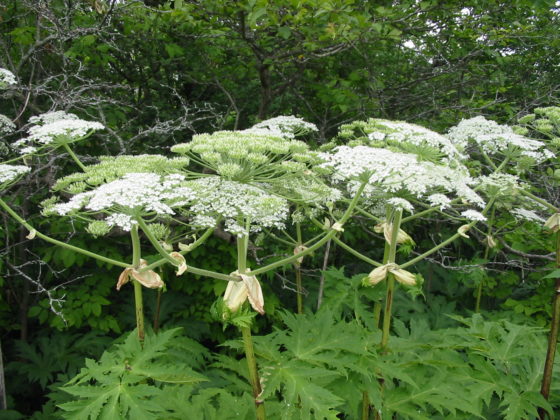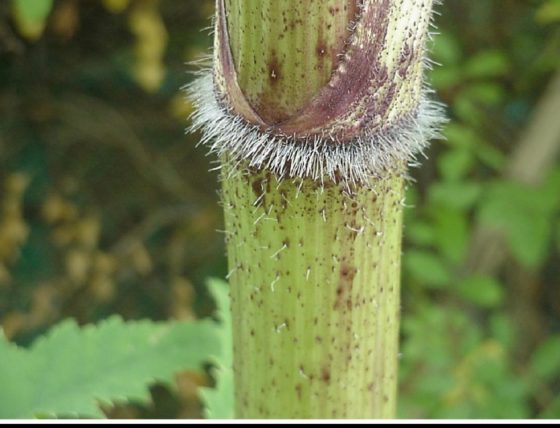
A dangerous plant and noxious weed (known as the giant hogweed) has been found and removed from a Seattle, Washington yard. The giant hogweed is known for its sap which causes third-degree burns and blisters and if it gets in the eyes, can cause blindness.
King County noxious weed experts removed the dangerous giant hogweed plant from the yard Tuesday, according to a report from King 5. The plant’s stem was nearly an inch in diameter and the sap inside is highly poisonous. “Giant hogweed is an invasive plant that’s been brought over from Russia and it causes these horrible burns and blisters on your skin. It’s a really nasty sap that makes your skin hypersensitive to sunlight,” specialist Sasha Shaw said. “Plus it makes a million seeds. We put them in the bag right here, but otherwise, it would’ve spread over this whole area.”
Crews in the noxious weed program are highly focused on the giant hogweed because of the dangers it presents to humans.
How to spot the giant hogweed:
The large plants have hollow stems that are generally 2 to 4 inches in diameter, with dark purple and red raised spots and bristle-like hairs.

The flowering top of the plant has little white flowers in groups of 50-150 flower rays clustered into an umbrella-shaped flower up to 2.5 feet across.

Environmental officials say that extreme caution should be taken should you attempt to remove a giant hogweed. (And based on the information available about this invasive plant, removal is a good idea.) They caution to NOT use a weed-whacker because the plant’s sap can splatter and then spread quickly. Eradication should be done by physical removal or using herbicides such as glyphosate or triclopyr, according to the NYDEC.
When removing the plant from a Seattle yard, the crew said they took extra care to ensure the plant won’t reproduce by spreading seeds and wore gloves so her skin wouldn’t blister and burn. “I wore gloves. I have long pants, long sleeved shirt. I just made sure I didn’t get any sap on my skin,” Karen Peterson added.
Recently, a teenager in Virginia was hospitalized when his face began peeling after contact with the giant hogweed’s sap. Alex Childress suffered severe third-degree burns while attempting to complete a landscaping job. Childress was taken to a hospital later that night and transferred to a burn unit. He was discharged last Thursday, but is likely still recovering.
Health officials say that you should immediately wash your skin if you’ve come in contact with the plant, immediately flush eyes with water, and promptly seek medical attention.









0 Comments